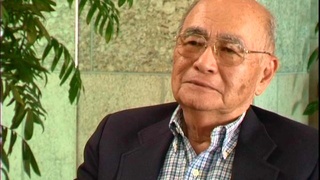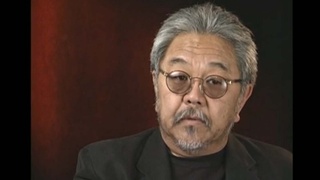Interviews
The reason for coming to Japan
The reason why I came to Japan was because I had an offer to play racquetball, which was my former sport at the time. I was a racquetball player—me and my brother. They wanted my brother to come, but because he was one of the top players, pro racquetball players in the pro tour, he was busy. So they kind of went down to the younger brother. “Oh, what about Enson?” And I was here. I had no idea what Japan was about. I couldn’t even imagine what the country was like. I really thought it was—I understood it was my roots, but I actually thought it was some weird place where people don’t speak the language. All Nikkei, all Japanese people there—I felt kind of weird. But I thought if you experience the culture, it would be a good trip. So, actually, the reason why I came out here was for a two-week racquetball tournament.
Date: October 14, 2003
Location: Saitama, Japan
Interviewer: Art Nomura
Contributed by: Art Nomura, Finding Home.
Explore More Videos

Involvement in JACL
(b.1935) American born Japanese. Retired businessman.

Impression of Japan upon arrival
(b.1935) American born Japanese. Retired businessman.

Lack of language skills
(b.1964) California-born business woman in Japan. A successor of her late grandmother, who started a beauty business in Japan.

Having patience in Japan, being both
(b.1964) California-born business woman in Japan. A successor of her late grandmother, who started a beauty business in Japan.

Acculturation
(b.1964) California-born business woman in Japan. A successor of her late grandmother, who started a beauty business in Japan.

Preserving traditional Japanese culture
(b.1964) California-born business woman in Japan. A successor of her late grandmother, who started a beauty business in Japan.

New Year's food
(b.1964) California-born business woman in Japan. A successor of her late grandmother, who started a beauty business in Japan.

Japanese are more accustomed to foreigners
(b.1964) California-born business woman in Japan. A successor of her late grandmother, who started a beauty business in Japan.

Food growing up
(b.1948) Nikkei from Southern California living in Japan.

Working at the magazine
(b.1948) Nikkei from Southern California living in Japan.

Kibei schoolchildren in Hiroshima, Japan
(b.1913) Kibei from California who served in the MIS with Merrill’s Marauders during WWII.

The reason he came to the United States (Japanese)
(1949 - 2019) Taiko player. Founded five taiko groups in Southern California

Devastation in Tokyo after World War II
(b. 1924) Political scientist, educator, and administrator from Hawai`i

Playing baseball along with American Nisei and Kibei
(1930-2018) Nisei born in Peru. Taken to the United States during WWII.

Grandfather's arrival in the U.S., experiencing discrimination
(b. 1939) Japanese American painter, printmaker & professor
